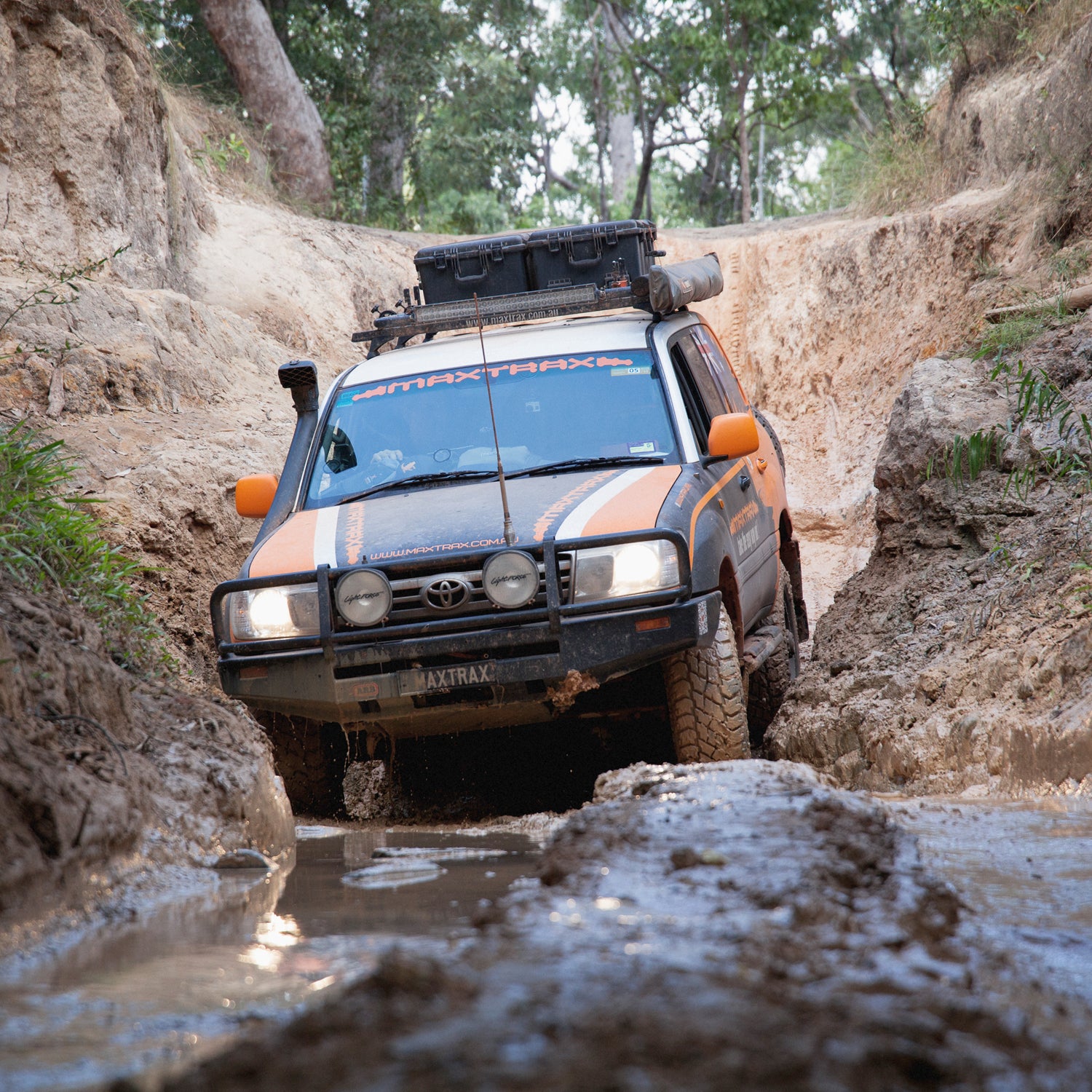Why do Subarus work better than Jeeps in some conditions and vice versa? The answer is in the way they power their wheels. Even if all four are driven, the way power gets to them—and what that does for your driving—differs hugely. Other times, it may not differ at all. Confused? Let’s explain how this all works.
It Starts With a Differential
When you take a turn in your car, truck, or AWD wagon-cum-SUV, the outside wheels travel farther than the inside wheels, so, they need to spin faster. To allow this speed differential, there’s a device called a differential between the wheels on an axle. Your front wheels also travel further than your rear wheels, so in an AWD or 4WD vehicle, there’s a need for a differential between the front and rear axles as well.
This system is great on the road, where you have good traction. But all this fancy no-crashyness in high-traction road conditions gets in the way once you encounter the kind of low-traction situations you’ll find off-road or in bad weather. You see, the nature of a differential is to direct all an engine’s torque down the path of least resistance—the tire with the least grip.
If you’ve ever tried to drive up a snowy slope, you’ve probably noticed this. When you hit the gas, one wheel will spin freely, while the other does nothing. To find grip in these conditions, you have to lock the wheels together. And how a vehicle does that is what defines its capability.
Why Drive All Four Wheels?
Let’s stick with the short answer: Traction. Everything else being equal, four wheels have twice the traction of two. Of course, as we began to get into the above, getting power to all four wheels is pretty complicated.
How All-Wheel Drive Works
Thanks to that differential between your axles, an AWD car will send your engine’s power down the path of least resistance—the wheel with the least grip. Where a two-wheel drive car can only choose between two wheels, an AWD system looks for that least resistance across all four wheels.
To counteract this, the better AWD cars are fitted with a center differential that contains a clutch or viscous drive unit. This splits torque front-to-rear, directing it away from the spinning wheel. Because it does this on-the-fly, automatically, without any driver intervention, good AWD vehicles can help a driver maintain traction through variable conditions. AWD can go from grippy pavement (where the differentials need to allow different speeds side-to-side and front-to-rear) to slippery snow, rain, or dirt (where torque also needs to be apportioned to wheels with grip), virtually instantaneously. That’s why AWD is the better choice for most drivers and why it helps you safely navigate both inclement weather and light off-road driving. A big differentiator in AWD systems is how much torque they’re able to apportion—the more the better. Make sure to look for that number when researching your next car purchase.
How Four-Wheel Drive Works
4WD works by locking the front and rear axles together, splitting torque 50:50 between them. This provides great traction, but a vehicle locked in 4WD cannot safely be operated on dry pavement because its front and rear axles are forced to rotate at the same speeds. In addition to potentially causing the vehicle to spin out of control, that also causes a lot of stress on the powertrain and can damage it. Locked in 4WD, a vehicle needs wheel slip to compensate for the different axle speeds—in 4WD, a truck is able to find traction on loose surfaces, but also needs loose surfaces to work. So you only really ever use 4WD off-road, or in deep snow.
Just to make matters as complicated as possible, some 4WD vehicles can also operate in AWD. Wes’ Land Rover Discovery is a great example. While driving around Hollywood, on paved roads, he won't have the front and rear axles locked together. To repeat our previous topic, that means torque is sent to all four wheels, but not split front to rear. Torque goes to whichever of the four wheels has the least grip. Then, when he’s off-road in Baja, he locks that center differential, enters 4WD, and power is split evenly front-to-rear, doubling his traction. With this arrangement, a full-time 4WD vehicle is able to operate safely on the road with its center differential unlocked, then traverse loose terrain by locking that differential.
While 4WD can split power evenly front-to-rear, it can’t apportion it side-to-side, across an axle. This means that in 4WD, torque is still traveling to the wheel with the least grip on each axle. To fix that, you need a locking differential, which forces both wheels on an axle to rotate at the same speed. This is the last piece of the puzzle to maximizing mechanical traction off-road. With a locked center differential, and locked differentials on both axles, torque is apportioned equally to all four wheels.
“Lockers” can work via mechanical, electronic, or pneumatic means. Advanced off-road vehicles such as the Jeep Wrangler Rubicon or Mercedes G-Wagon, come outfitted with front and rear lockers as stock, which means they’re the only vehicles truly capable of simultaneously driving all four wheels in low-traction conditions. If your vehicle does not have front and rear lockers, they’re the best investment you can make to achieve more off-road capability. are completely invisible to your vehicle’s handling, until you hit the switch, engage them, and get instant grip.
Low Range Multiplies Torque
If you’ve ever tried to drive your car up and over a curb, you’ll have noticed how much gas it took just to creep over that simple obstacle. And your car probably didn’t like it. Wondering how 4x4s crawl up giant, steep rocks? It’s not with more power, it’s with lower gearing. Low-range gearing multiplies an engine’s torque (typically by a factor of two to four). It’s like shifting into the granny gear on your mountain bike—suddenly climbs require much less work. This also has the effect of multiplying the effects of engine braking; low-range gearing allows you to go down very steep terrain without using the brakes.
By enabling you to tackle technical terrain at lower speeds, low-range gearing also makes the obstacles easier on your gearing, enabling your suspension to absorb the bumps, and maximizing safety. Always be in low-range if you’re around anything steep off-road.
Technology Is Replacing Mechanical Capability
Off-road, your vehicle’s capability used to depend on 4WD, locking diffs, and other specialty components. Technology is changing that. These days, people want the vehicles to be able to crawl the Rubicon Trail and lap the Nurburgring. Traction control is making that possible.
Who needs an expensive, seldom-used locking differential when you can just trick your ABS system into doing the same job? By selectively actuating the brake on a spinning wheel, this technology mimics the effect of a locker, directing torque to the wheel with traction. These days, traction control has become so effective that it’s able to catch a spinning wheel within 1/100th of a rotation. It automatically provides the benefits of a locker, without you needing to know when to use one. The only downside comes from the fact that you’re robbing torque from the engine to get traction—fine, if you have more than enough torque, but bad if you don’t have the gearing to find it.
You can actually use your left foot to mimic this. The next time your AWD Subaru is stuck, with one wheel spinning uncontrollably, try left foot braking while modulating the gas pedal with your right. That should send power towards the wheel that has grip, allowing you to drive right on out.


